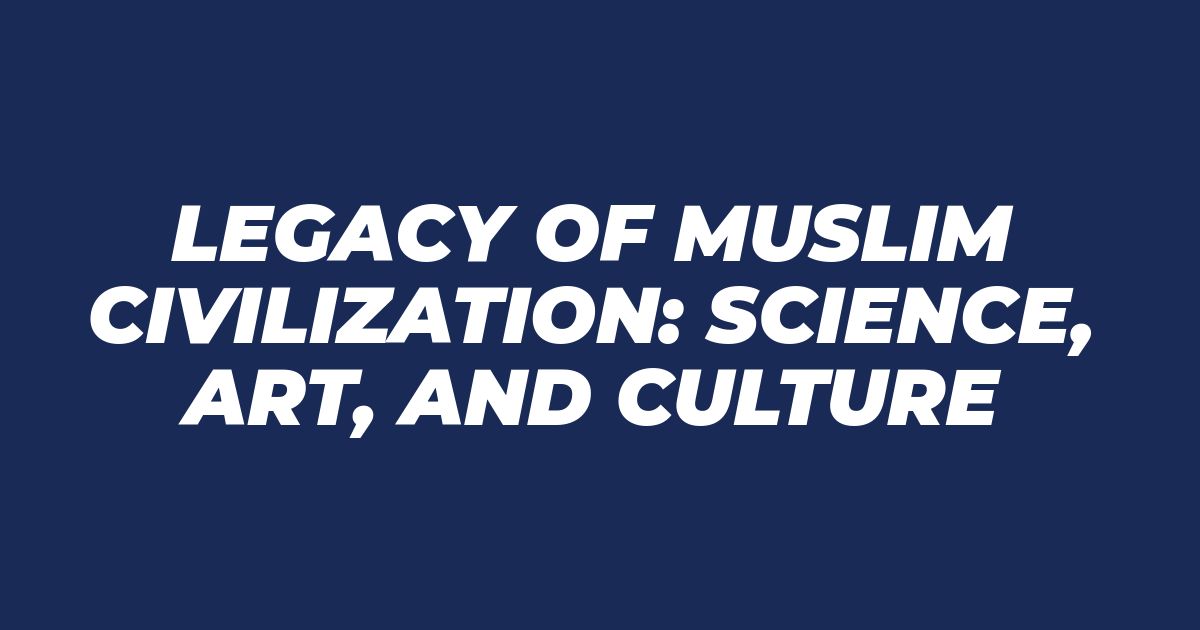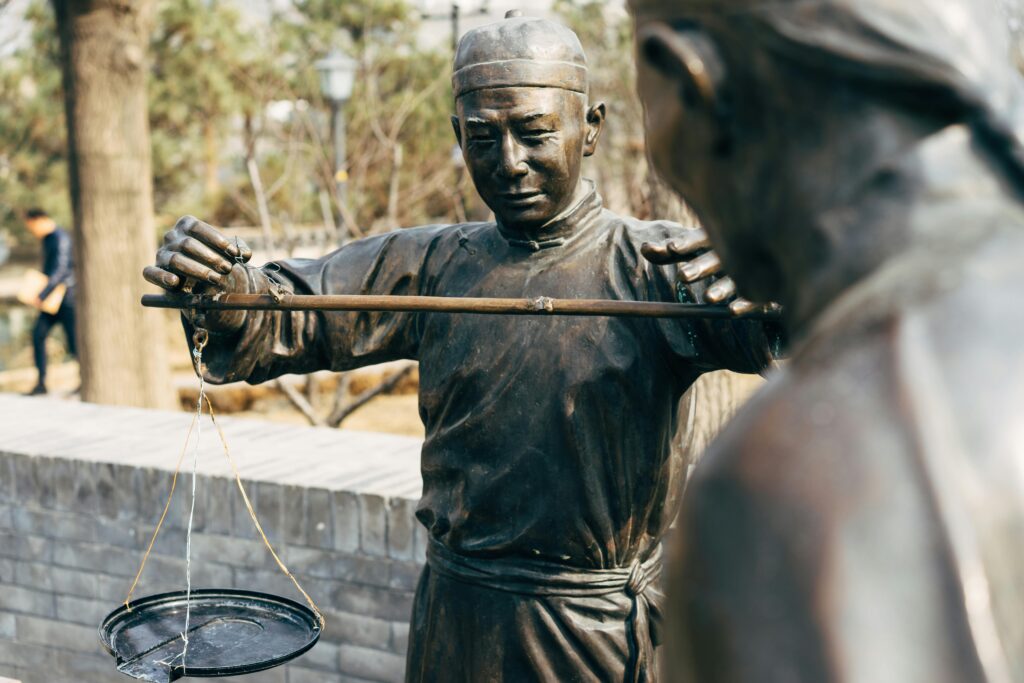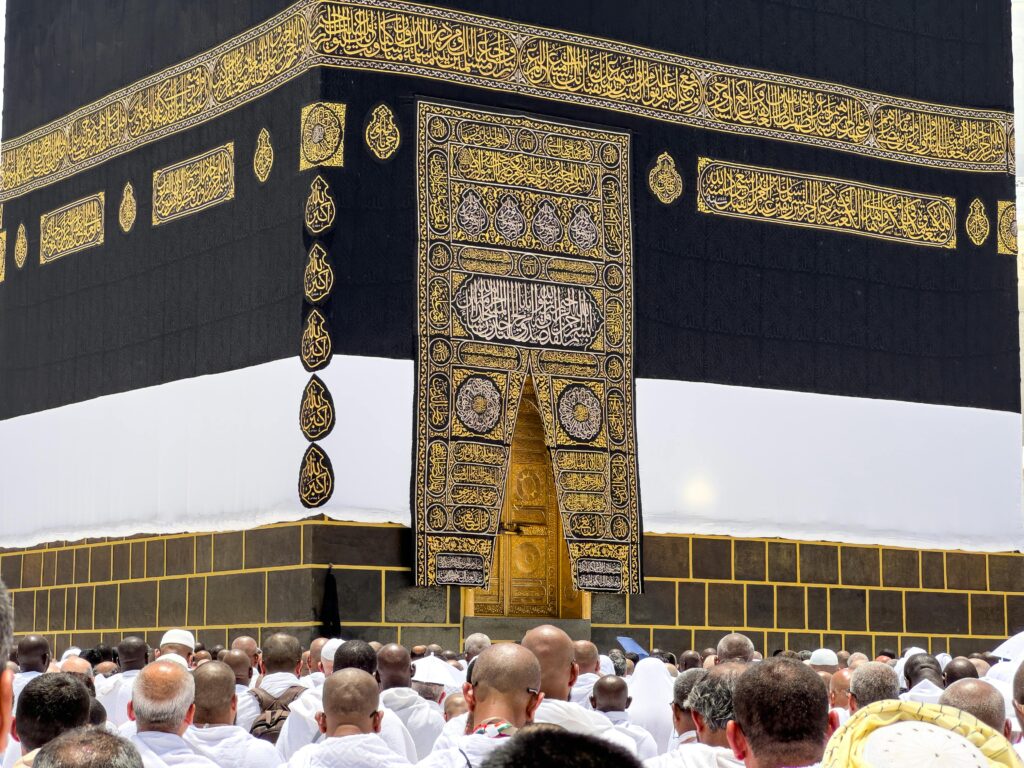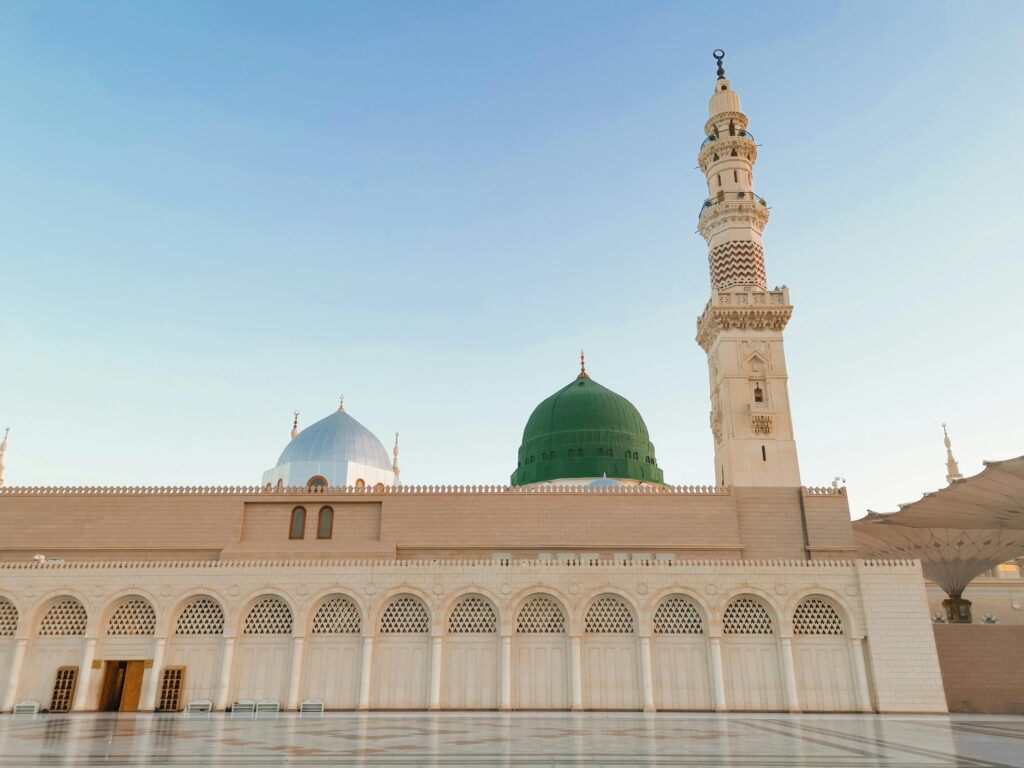Discover Muslim History Through Its People, Culture, and Achievements
Muslim history stretches back over 1,400 years and covers a vast range of cultures, ideas, and achievements. It’s a story shaped by influential leaders, thinkers, and artists who left a lasting mark on the world. Understanding this history helps clear up many myths and shows how Muslim civilizations contributed to science, art, philosophy, and society. This post offers a clear and straightforward look at those stories, making them easy to grasp and appreciate.
The Origins and Early Expansion of Islam
Understanding the beginnings of Islam gives us a solid foundation to appreciate its rich history. From the life of Prophet Muhammad and the momentous revelation of the Quran to the formation of the first Muslim community and the rapid spread of Islam, this period shaped the faith’s core principles and institutions that lasted for centuries. Let’s walk through these key milestones that brought a growing community together and expanded its influence far beyond the Arabian Peninsula.
Prophet Muhammad and the Revelation of the Quran
Muhammad was born in Mecca around 570 CE into the Quraysh tribe. Known for his honesty and calm nature, he earned the nickname Al-Amin (the trustworthy). His early years were marked by reflection and a deep sense of spirituality. Around age 40, he began receiving revelations through the angel Gabriel. These messages were later recorded as the Quran, Islam’s sacred scripture.
The Quran presented a clear call to monotheism, social justice, and compassion for the less fortunate. Muhammad’s words provided both spiritual guidance and practical rules for daily life. He shared these teachings with close friends and family, slowly gathering followers despite significant opposition. His life and the Quran’s transmission are critical to Islam’s foundation and are well-explained in this detailed Biography of Muhammad.
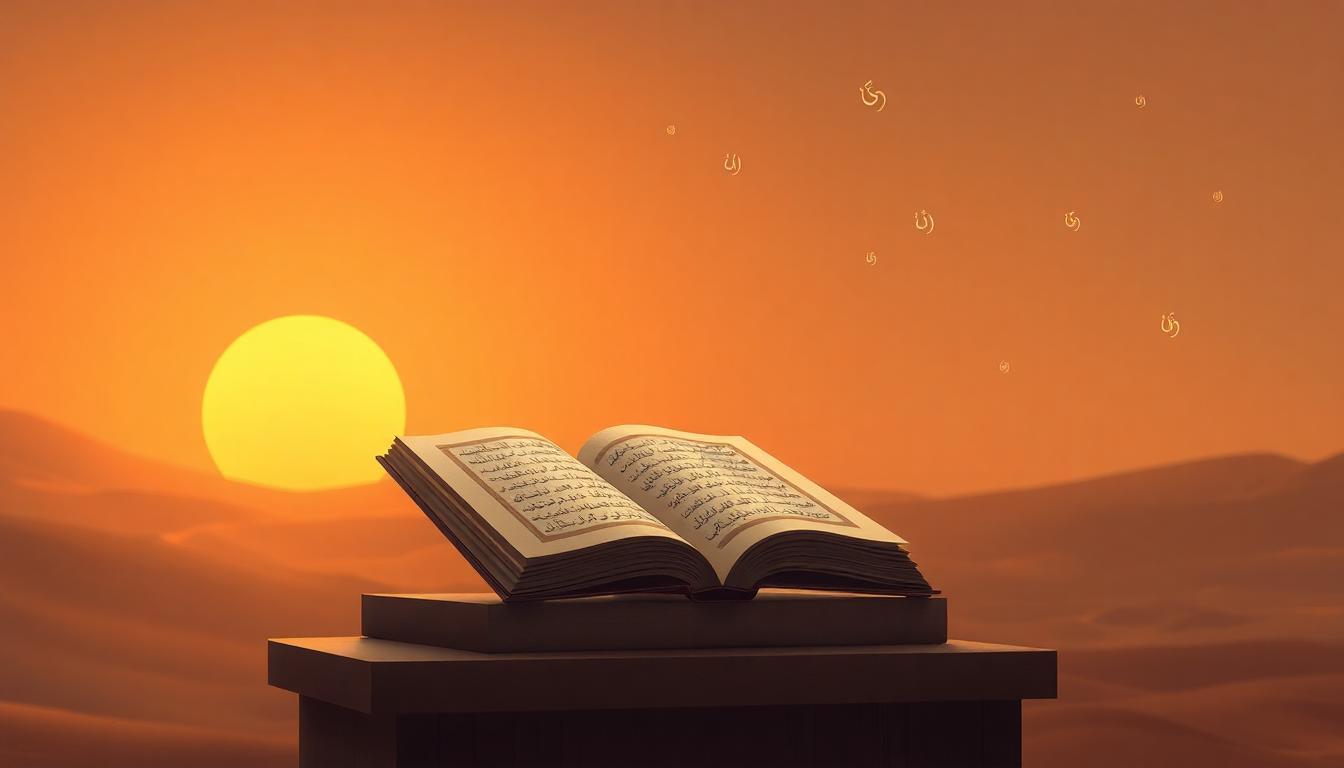
Photo created with AI, capturing the spiritual atmosphere of the Quran’s revelation
The Hijra and the Formation of the First Muslim Community
Resistance in Mecca forced Muhammad and his followers to migrate to Medina in 622 CE, an event known as the Hijra. This migration was more than a move; it was the birth of a new social and political order. In Medina, the Muslim community organized around shared beliefs, establishing social welfare programs and self-governance structures.
The Hijra marks the beginning of the Islamic calendar, emphasizing the transformation from scattered believers into an organized community with political authority and support systems. Muhammad acted as both a spiritual leader and a political head, shaping a communal life that balanced faith with practical governance. To explore more about this pivotal journey, Britannica offers an insightful overview of the Hijrah.
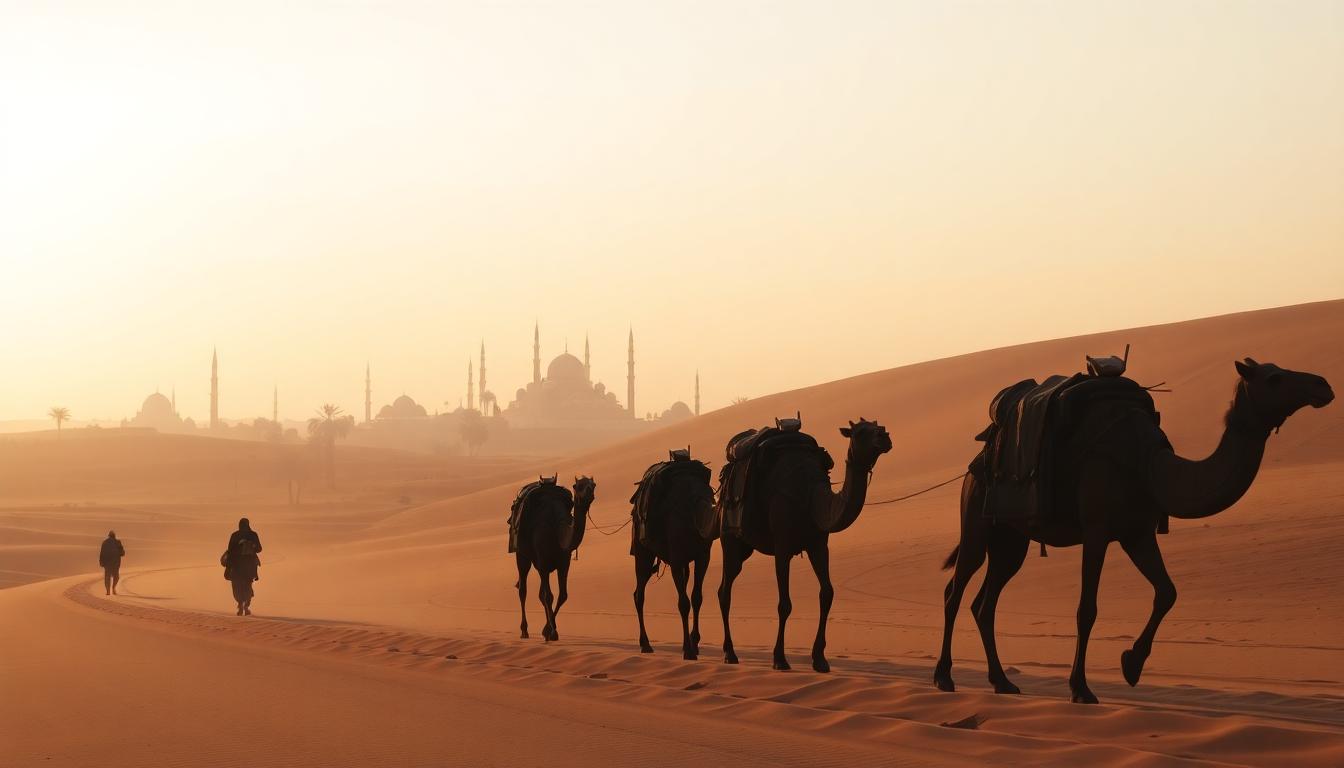
Photo created with AI, representing the journey of the Hijra
The Rashidun and Umayyad Caliphates: Spreading Islam
After Muhammad’s death in 632 CE, leadership passed to the Rashidun Caliphs, the first four successors: Abu Bakr, Umar, Uthman, and Ali. Known as the “Rightly Guided Caliphs,” they maintained Muhammad’s vision and expanded Islam through a combination of military campaigns, diplomacy, and administration.
During the Rashidun period (632–661 CE), the Muslim realm expanded rapidly into Iraq, Syria, Egypt, and parts of Persia. This era set the foundation for Islamic governance, law, and community organization with a focus on justice and inclusion.
Following the Rashidun, the Umayyad Caliphate continued this expansion, extending Muslim rule across North Africa, Spain, and parts of Central Asia. They introduced strong bureaucratic systems, fostered cultural exchanges, and supported architectural achievements like the Dome of the Rock. The growth of Islam during these times shows how religion, politics, and culture intertwined to build a vast and varied civilization. You can learn more about this phase from Britannica’s Rashidun Caliphate and Caliphate articles.
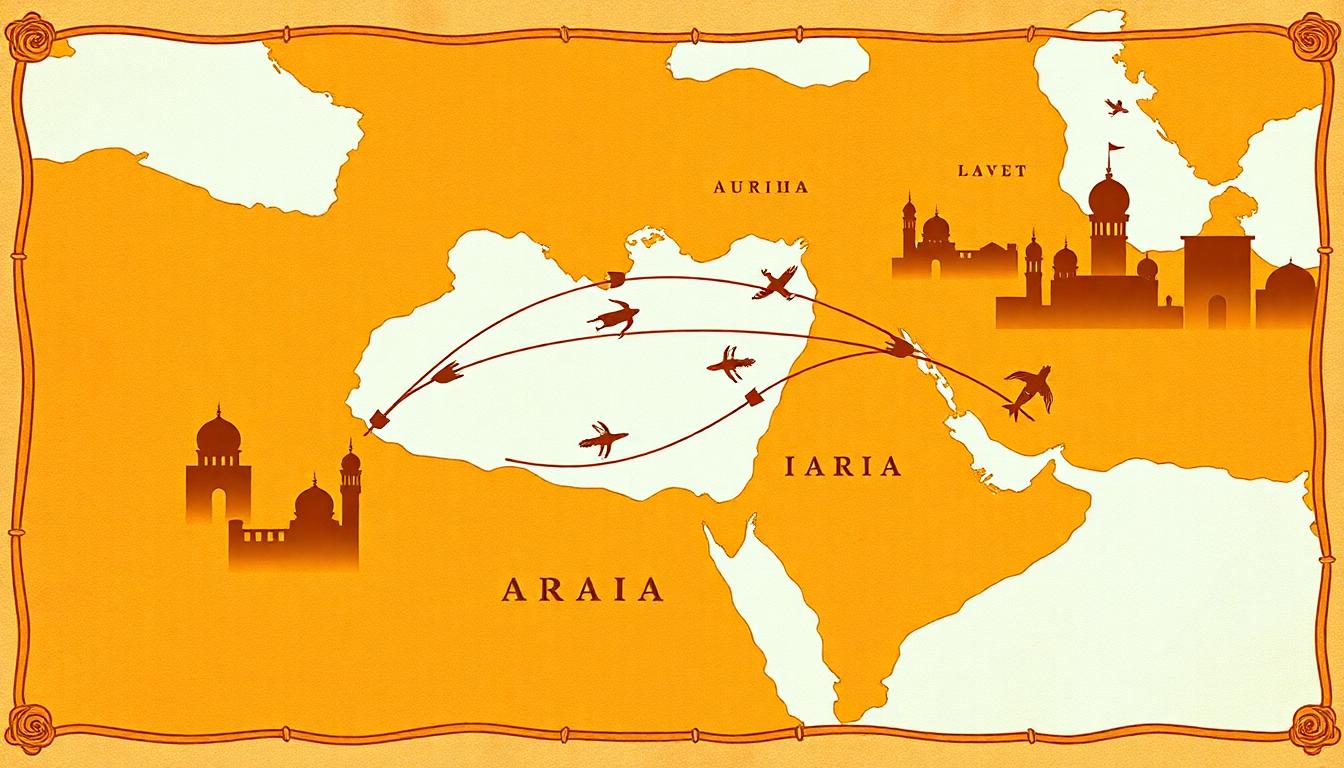
Photo created with AI, symbolizing the breadth of early Muslim expansion
These beginnings highlight the practical and spiritual roots of Islam, showing how devoted leadership and shared beliefs built a growing civilization that shaped world history.
Cultural and Intellectual Achievements of Muslim Civilizations
The story of Muslim history goes far beyond religious tradition. It’s a story of scientific breakthroughs, timeless art, and a passion for knowledge that lit up the world for centuries. Muslim civilizations invested in learning and innovation, passing discoveries and ideas across three continents. Their examples prove how science, philosophy, and the arts grow best when people from different cultures work and dream together.
The Islamic Golden Age: Science and Philosophy
Discover Muslim History Through Its People, Culture, and Achievements
Muslim history stretches back over 1,400 years and covers a vast range of cultures, ideas, and achievements. It’s a story shaped by influential leaders, thinkers, and artists who left a lasting mark on the world. Understanding this history helps clear up many myths and shows how Muslim civilizations contributed to science, art, philosophy, and society. This post offers a clear and straightforward look at those stories, making them easy to grasp and appreciate.
The Origins and Early Expansion of Islam
Understanding the beginnings of Islam gives us a solid foundation to appreciate its rich history. From the life of Prophet Muhammad and the momentous revelation of the Quran to the formation of the first Muslim community and the rapid spread of Islam, this period shaped the faith’s core principles and institutions that lasted for centuries. Let’s walk through these key milestones that brought a growing community together and expanded its influence far beyond the Arabian Peninsula.
Prophet Muhammad and the Revelation of the Quran
Muhammad was born in Mecca around 570 CE into the Quraysh tribe. Known for his honesty and calm nature, he earned the nickname Al-Amin (the trustworthy). His early years were marked by reflection and a deep sense of spirituality. Around age 40, he began receiving revelations through the angel Gabriel. These messages were later recorded as the Quran, Islam’s sacred scripture.
The Quran presented a clear call to monotheism, social justice, and compassion for the less fortunate. Muhammad’s words provided both spiritual guidance and practical rules for daily life. He shared these teachings with close friends and family, slowly gathering followers despite significant opposition. His life and the Quran’s transmission are critical to Islam’s foundation and are well-explained in this detailed Biography of Muhammad.

Photo created with AI, capturing the spiritual atmosphere of the Quran’s revelation
The Hijra and the Formation of the First Muslim Community
Resistance in Mecca forced Muhammad and his followers to migrate to Medina in 622 CE, an event known as the Hijra. This migration was more than a move; it was the birth of a new social and political order. In Medina, the Muslim community organized around shared beliefs, establishing social welfare programs and self-governance structures.
The Hijra marks the beginning of the Islamic calendar, emphasizing the transformation from scattered believers into an organized community with political authority and support systems. Muhammad acted as both a spiritual leader and a political head, shaping a communal life that balanced faith with practical governance. To explore more about this pivotal journey, Britannica offers an insightful overview of the Hijrah.

Photo created with AI, representing the journey of the Hijra
The Rashidun and Umayyad Caliphates: Spreading Islam
After Muhammad’s death in 632 CE, leadership passed to the Rashidun Caliphs, the first four successors: Abu Bakr, Umar, Uthman, and Ali. Known as the “Rightly Guided Caliphs,” they maintained Muhammad’s vision and expanded Islam through a combination of military campaigns, diplomacy, and administration.
During the Rashidun period (632–661 CE), the Muslim realm expanded rapidly into Iraq, Syria, Egypt, and parts of Persia. This era set the foundation for Islamic governance, law, and community organization with a focus on justice and inclusion.
Following the Rashidun, the Umayyad Caliphate continued this expansion, extending Muslim rule across North Africa, Spain, and parts of Central Asia. They introduced strong bureaucratic systems, fostered cultural exchanges, and supported architectural achievements like the Dome of the Rock. The growth of Islam during these times shows how religion, politics, and culture intertwined to build a vast and varied civilization. You can learn more about this phase from Britannica’s Rashidun Caliphate and Caliphate articles.

Photo created with AI, symbolizing the breadth of early Muslim expansion
These beginnings highlight the practical and spiritual roots of Islam, showing how devoted leadership and shared beliefs built a growing civilization that shaped world history.
Cultural and Intellectual Achievements of Muslim Civilizations
The story of Muslim history goes far beyond religious tradition. It’s a story of scientific breakthroughs, timeless art, and a passion for knowledge that lit up the world for centuries. Muslim civilizations invested in learning and innovation, passing discoveries and ideas across three continents. Their examples prove how science, philosophy, and the arts grow best when people from different cultures work and dream together.
The Islamic Golden Age: Science and Philosophy
From the 8th to 14th centuries, many Muslim cities became global centers of learning. Baghdad, Cairo, and Córdoba welcomed scholars who shared knowledge across cultures. During this period, known as the Islamic Golden Age, Muslim scientists and philosophers changed the way the world understood math, medicine, astronomy, and reason.
Here are some influential thinkers whose work still shapes our lives:
- Ibn Sina (Avicenna): Famous as a physician, philosopher, and polymath, Ibn Sina wrote “The Canon of Medicine,” a key medical textbook for centuries in both East and West. His approach to health blended careful observation with logic, paving the way for modern scientific inquiry. His life and achievements are detailed in Avicenna’s biography.
- Al-Khwarizmi: Often called the “father of algebra,” Al-Khwarizmi introduced ways of solving equations that are taught in schools today. His works brought Hindu-Arabic numerals (the numbers we use now) into Europe and changed mathematics forever. Al-Khwarizmi’s biography explains his global influence.
- Al-Farabi: Known as the “Second Teacher” (after Aristotle), Al-Farabi built bridges between Greek, Roman, and Muslim thought. He wrote about logic, music, and politics, exploring how societies can work in harmony. His teachings shaped later Muslim and European philosophy. Learn more about him in the Al-Farabi Britannica entry.
Muslim scholars also improved tools like the astrolabe (an ancient instrument for mapping the stars), made new maps, and developed hospitals where doctors followed evidence-based practices. Their discoveries spread to Europe, fueling the later Renaissance and shaping the sciences we depend on today.
Art, Literature, and Architecture
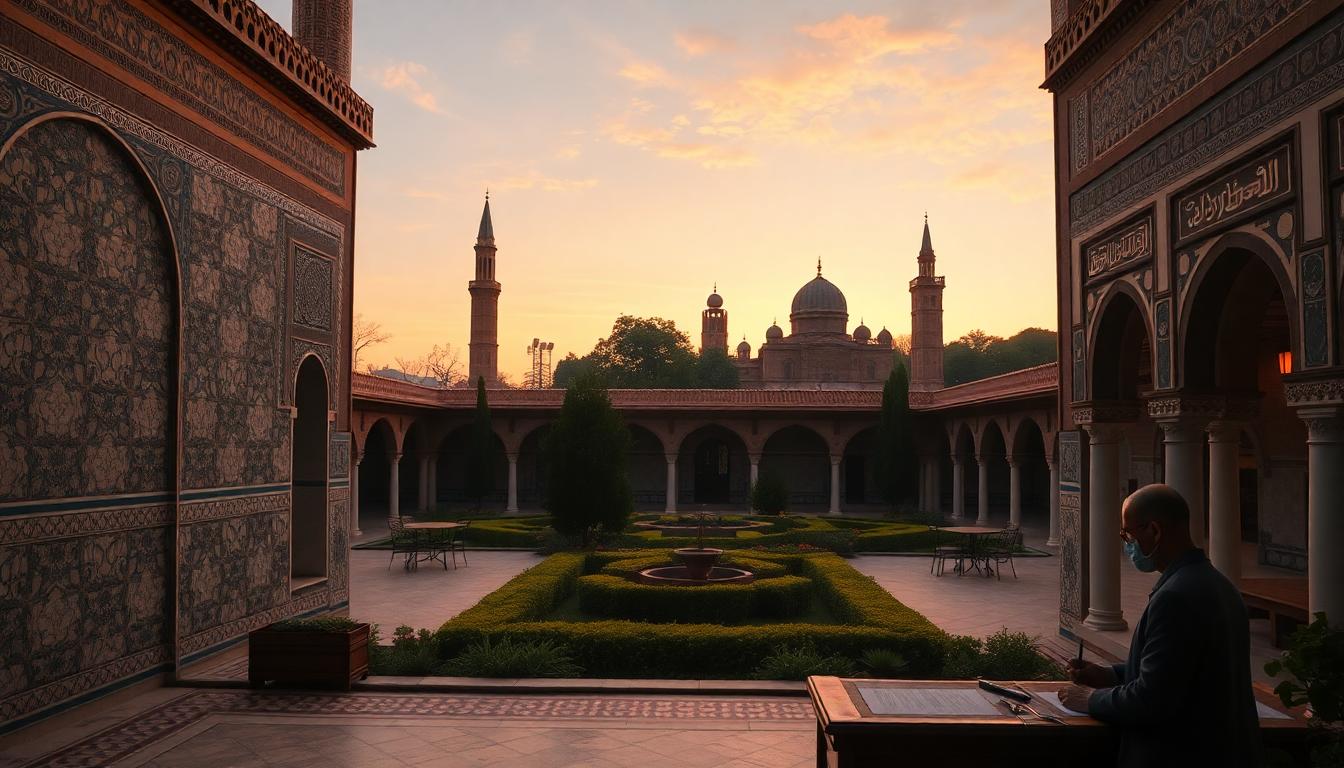
Muslim civilizations also sparked an artistic revolution. Their art and literature blend beauty with meaning, often reflecting faith and a love for learning.
Some of the most visible legacies are:
- Distinctive Islamic Art: Artists used complex geometric patterns, floral designs, and calligraphy instead of figures. This created a visual language unique to Islamic culture and can be seen in everything from tilework and textiles to everyday pottery.
- Calligraphy: Writing is a revered art in Islam, especially for copying the Quran. Arabic calligraphy decorates everything from books to grand buildings, turning the written word into pure art.
- Poetry and Sufism: Muslim poets like Rumi and Hafez wrote works that speak to the soul. Their verses focus on love, devotion, and the mysteries of existence, sometimes inspired by Sufi mysticism. These poems are still read for their insight and emotional power.
- Architectural Wonders: Muslim architects created spaces that inspire awe and invite reflection. The Alhambra in Spain stands out, with its lush courtyards and intricate tilework—an oasis of peace and detail. The Great Mosque of Córdoba dazzles with its rows of arches and blending of many styles, showing how Muslim Spain welcomed many cultures.
Major Artistic Achievements Table
| Field | Example | Lasting Influence |
|---|---|---|
| Mathematics | Algebra by Al-Khwarizmi | Framework for modern math |
| Medicine | Ibn Sina’s Canon | Standard medical textbook |
| Architecture | Alhambra, Córdoba | Influenced later designers |
| Literature | Rumi’s poetry | Inspires global readers |
| Calligraphy | Quranic manuscripts | Art and scripture combined |
From libraries holding thousands of books to peaceful gardens and soaring domes, these creations show a culture driven by knowledge and beauty. Each shows just how deeply Muslim civilizations have inspired the world, not just in history but in the creativity and curiosity we celebrate today.
Diversity Within Muslim Societies
The Muslim world has never been a single, uniform culture. It’s a vast mosaic of beliefs, traditions, and experiences shaped by geography, history, and personal faith. Across centuries, Muslim societies developed rich layers of diversity, from various sects to regional customs and individual stories. This diversity reveals a complex and vibrant heritage that goes far beyond stereotypes or simple definitions. Let’s explore some of these dimensions through the lens of sectarian diversity, extraordinary travel tales, and the powerful spiritual voices of women.
Sectarian Diversity and Its Historical Roots
Islam quickly grew into a religion with multiple perspectives on faith and leadership. The two largest sects, Sunni and Shia, share the core foundation of Islamic belief but differ in key aspects of practice and leadership. Sunni Muslims, who form the majority worldwide, hold that the Prophet Muhammad did not appoint a successor. Instead, they believe leadership should be chosen by the community’s consensus. Shia Muslims, on the other hand, believe that leadership rightly belongs to the Prophet’s family, particularly his cousin and son-in-law Ali and his descendants.
This split dates back to political tensions following the Prophet’s death and shaped centuries of history, culture, and legal schools within Islam. Beyond Sunni and Shia Islam, smaller groups like the Ibadi Muslims carry traditions tracing back to early movements like the Khawarij, holding distinct beliefs while sharing many practices with Sunni Islam.
Local customs and legal schools (madhahib) further add variety. For example, Muslim practices in North Africa, South Asia, and Southeast Asia often reflect regional languages, festivals, and interpretations alongside broader Islamic teachings. This diversity within unity illustrates how Islam adapts to different cultures without losing its essential principles.
If you want to know more about these sects and their historical development, Britannica’s article on Sunni Islam offers a clear overview.
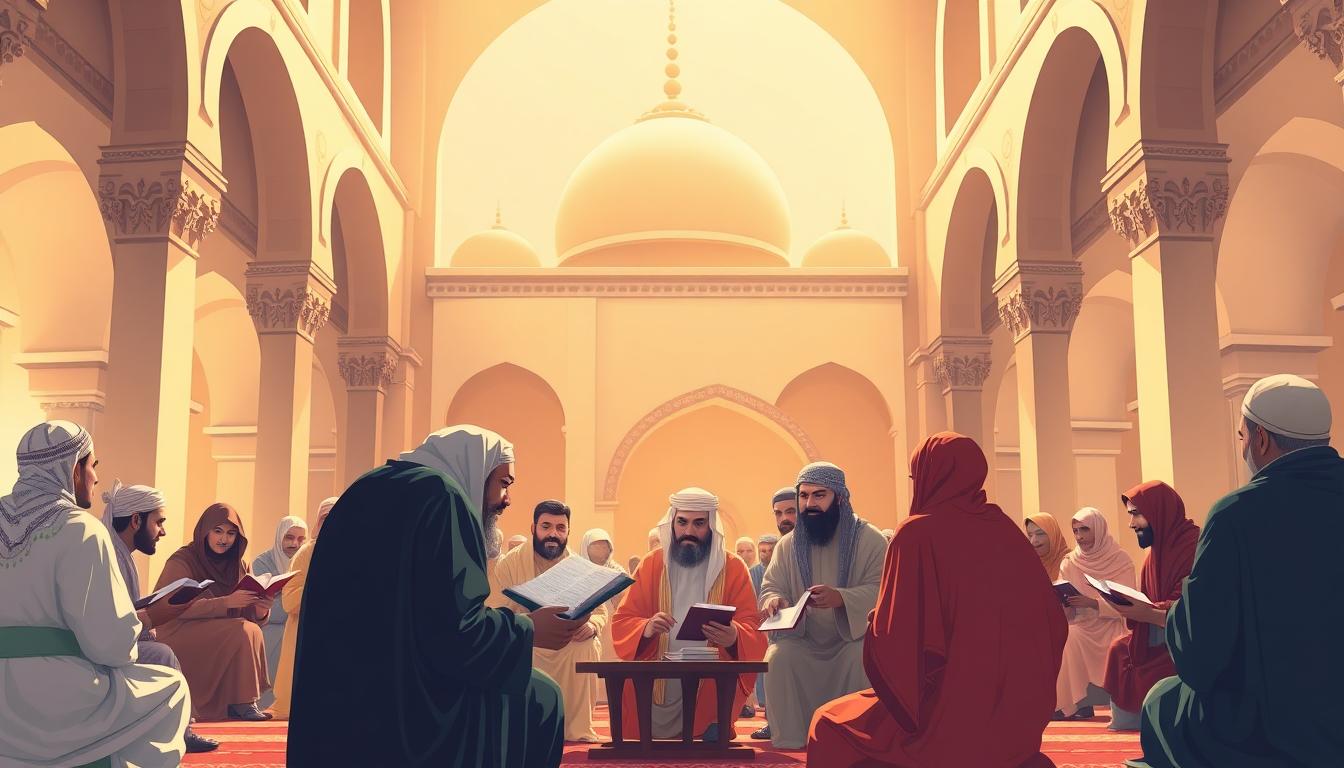
Image created with AI showing Muslim scholars discussing knowledge in a diverse setting
Travelers and Storytellers: Ibn Battuta’s Global Muslim World
No figure captures the vastness of the Muslim world better than Ibn Battuta, the medieval scholar and traveler who covered about 75,000 miles in the 14th century. Starting from his hometown in Morocco, Ibn Battuta journeyed across North Africa, the Middle East, Central Asia, South Asia, and even Southeast Asia and China.
His travelogue, known as the Rihla (meaning “Journey”), isn’t just a diary of roads taken. It’s a vivid window into the rich cultural, religious, and social life of Muslim societies spread across continents. Ibn Battuta wrote about meeting sultans and scholars, visiting bustling markets, praying in grand mosques, and sharing meals in diverse communities.
Ibn Battuta’s travels highlight how Islam connected distant places through shared language (Arabic), trade networks, and religious practice, creating a global Muslim identity that was at the same time local and universal. His stories remind us that Muslim history includes many voices and faces, across deserts, oceans, and cities.
For a deeper dive into his journeys, Britannica’s profile on Ibn Battuta provides detailed insights.
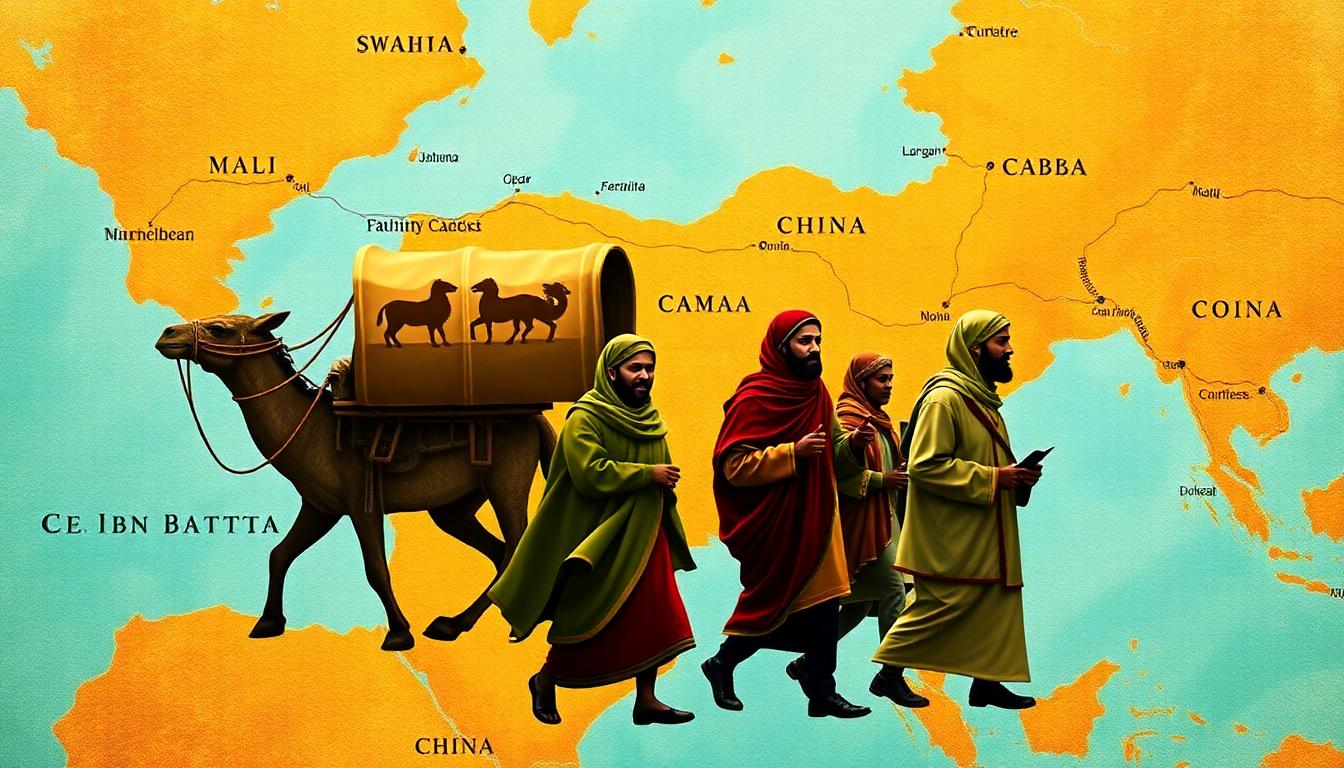
Image created with AI illustrating Ibn Battuta’s expansive travels across Muslim societies
Women and Spirituality: Rabia al-Adawiyya and Beyond
While male scholars and rulers often dominate historical narratives, women have played vital roles in shaping Islamic spirituality and culture. Rabia al-Adawiyya (circa 8th century, Basra) is one of the earliest known female Sufi mystics whose life and teachings continue to inspire.
Rabia is famous for her focus on pure, selfless love for God, a devotion not based on fear or reward but on deep spiritual connection. Her poetry and sayings emphasize inner purity and connection to the divine, which helped shape early Sufi ideas of personal spirituality and mysticism.
Her legacy shows that women participated actively in religious thought and could influence the spiritual life of Muslim communities long before many parts of society accepted women in formal religious roles. Beyond Rabia, many women have contributed as poets, scholars, and organizers, enriching Islamic intellectual and spiritual traditions.
The lives of such women illustrate the richness and complexity of Muslim history, where spirituality flows through many expressions. To learn more about Rabia al-Adawiyya, you can explore her history in detail on Encyclopedia.com.

Image created with AI showing Rabia al-Adawiyya reflecting in a peaceful spiritual setting
Together, these sections show how Muslim societies are vibrant and multifaceted. From sectarian traditions to journeys across continents and the spiritual voices of women, the Muslim world is a living history of diversity in belief and practice.
Modern Impact and Muslim Heritage Today
Muslim history is not just a chapter from the past—it lives on in the present, shaping societies and communities across the globe. Today, the stories, culture, and achievements of Muslim peoples continue to be acknowledged, celebrated, and preserved in thoughtful ways. This section highlights some key examples of how modern society honors Muslim heritage and supports ongoing research into its diverse and evolving history.
Muslim-American Heritage and Cultural Contributions
In the United States, Muslim Americans are increasingly recognized for their deep-rooted contributions to the country’s social, cultural, and historical landscape. Each year, Muslim American Heritage Month celebrates this presence, shining a light on centuries of involvement from the founding era to the present day. This initiative encourages a broad understanding of Muslim Americans’ roles in arts, activism, education, science, and public service.
Alongside heritage months, the public has gained access to powerful storytelling through documentary projects such as American Muslims: A History Revealed. This series of short films explores the early history of Muslims in America, exposing often overlooked narratives that correct misconceptions and broaden awareness. The documentaries highlight the resilience and diversity within Muslim communities, illuminating the ways in which Muslims have shaped the nation through civic engagement and cultural exchange.
Events, festivals, and educational programs linked to these initiatives provide spaces where Muslim Americans share their heritage openly and proudly. This growing recognition plays an important role in fostering inclusion and celebrating the mosaic of American identity. To explore this further, Muslim American Heritage Month and the documentary series American Muslims: A History Revealed offer valuable insights and real-life stories.
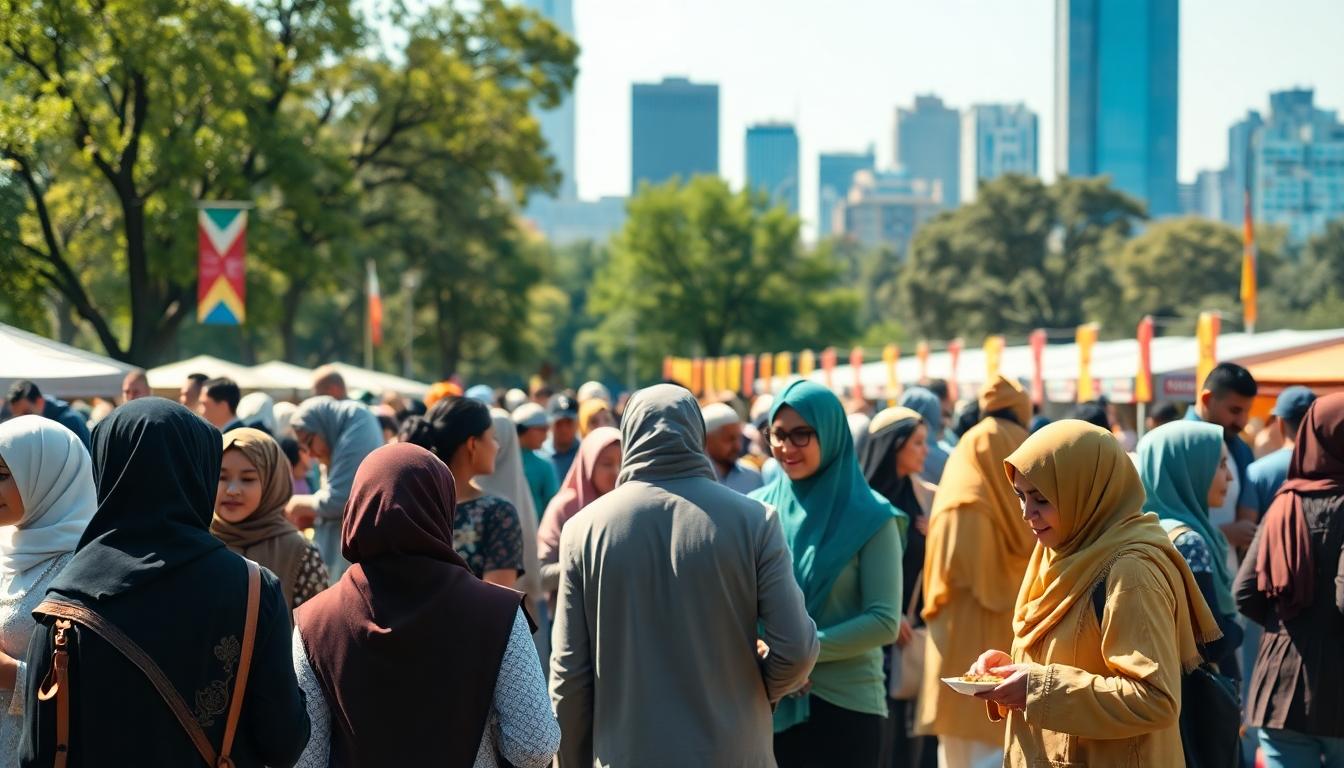
Muslim Americans celebrating cultural heritage at a community festival in a city park. Image created with AI.
Preserving and Revisiting Muslim History through Scholarship
Academic institutions and research centers worldwide are dedicating more resources and attention to preserving Muslim histories. Modern scholarship moves beyond traditional study methods by including ethnographic research, oral histories, and cross-disciplinary approaches. These efforts uncover diverse Muslim experiences and identities, from local communities to transnational networks.
Fellowship programs and grants support emerging and established scholars to dive deep into topics such as Islamic art, history, law, and cultural interactions. For example, programs like the Humanities Research Fellowships for the Study of the Arab World and visiting fellowships at institutions like the Oxford Center for Islam Studies open doors for focused study in areas like South Asian Islamic history.
Research projects increasingly address contemporary global themes: identity formation, challenges faced by Muslim minorities, and combating Islamophobia. The Islamophobia Research and Documentation Project at UC Berkeley takes a rigorous approach to understanding and addressing the social and political impacts Muslims face in many regions today. These scholarly works do more than preserve history; they actively engage with current realities to support Muslim communities worldwide.
In classrooms, conferences, and publications, this scholarship bridges past and present, providing a nuanced picture of Muslim civilizations and their ongoing influence. It also encourages dialogue and understanding across different cultures. You can learn more about these academic efforts at the Islamophobia Research and Documentation Project and other fellowship opportunities such as those listed by Barakat Trust and Islamic Studies Research Grants.

Scholars collaborating to preserve and explore Muslim history through modern research methodologies. Image created with AI.
Muslim heritage continues to thrive as both a living culture and a field of serious study. These ongoing efforts help honor the depth of contributions across time while engaging with the challenges and opportunities present today.
Conclusion
Muslim history is a vast and rich tapestry filled with moments of deep faith, bold exploration, and impressive achievements across many fields. From the early days in Arabia to the vast journeys of Ibn Battuta and the spiritual insights of figures like Rabia al-Adawiyya, these stories reveal the complexity and diversity within Muslim societies. This history has shaped not only local cultures but also global traditions in science, art, philosophy, and community.
Exploring these rich stories helps us see beyond common myths and appreciate how Muslim heritage continues to influence modern life worldwide. Keep these narratives alive by learning more, visiting museums, reading biographies, or engaging in discussions. The past offers valuable lessons and inspiration that remain relevant today. Thank you for joining this journey into Muslim history—your curiosity helps keep these stories vibrant and meaningful.
From the 8th to 14th centuries, many Muslim cities became global centers of learning. Baghdad, Cairo, and Córdoba welcomed scholars who shared knowledge across cultures. During this period, known as the Islamic Golden Age, Muslim scientists and philosophers changed the way the world understood math, medicine, astronomy, and reason.
Here are some influential thinkers whose work still shapes our lives:
- Ibn Sina (Avicenna): Famous as a physician, philosopher, and polymath, Ibn Sina wrote “The Canon of Medicine,” a key medical textbook for centuries in both East and West. His approach to health blended careful observation with logic, paving the way for modern scientific inquiry. His life and achievements are detailed in Avicenna’s biography.
- Al-Khwarizmi: Often called the “father of algebra,” Al-Khwarizmi introduced ways of solving equations that are taught in schools today. His works brought Hindu-Arabic numerals (the numbers we use now) into Europe and changed mathematics forever. Al-Khwarizmi’s biography explains his global influence.
- Al-Farabi: Known as the “Second Teacher” (after Aristotle), Al-Farabi built bridges between Greek, Roman, and Muslim thought. He wrote about logic, music, and politics, exploring how societies can work in harmony. His teachings shaped later Muslim and European philosophy. Learn more about him in the Al-Farabi Britannica entry.
Muslim scholars also improved tools like the astrolabe (an ancient instrument for mapping the stars), made new maps, and developed hospitals where doctors followed evidence-based practices. Their discoveries spread to Europe, fueling the later Renaissance and shaping the sciences we depend on today.
Art, Literature, and Architecture

Muslim civilizations also sparked an artistic revolution. Their art and literature blend beauty with meaning, often reflecting faith and a love for learning.
Some of the most visible legacies are:
- Distinctive Islamic Art: Artists used complex geometric patterns, floral designs, and calligraphy instead of figures. This created a visual language unique to Islamic culture and can be seen in everything from tilework and textiles to everyday pottery.
- Calligraphy: Writing is a revered art in Islam, especially for copying the Quran. Arabic calligraphy decorates everything from books to grand buildings, turning the written word into pure art.
- Poetry and Sufism: Muslim poets like Rumi and Hafez wrote works that speak to the soul. Their verses focus on love, devotion, and the mysteries of existence, sometimes inspired by Sufi mysticism. These poems are still read for their insight and emotional power.
- Architectural Wonders: Muslim architects created spaces that inspire awe and invite reflection. The Alhambra in Spain stands out, with its lush courtyards and intricate tilework—an oasis of peace and detail. The Great Mosque of Córdoba dazzles with its rows of arches and blending of many styles, showing how Muslim Spain welcomed many cultures.
Major Artistic Achievements Table
| Field | Example | Lasting Influence |
|---|---|---|
| Mathematics | Algebra by Al-Khwarizmi | Framework for modern math |
| Medicine | Ibn Sina’s Canon | Standard medical textbook |
| Architecture | Alhambra, Córdoba | Influenced later designers |
| Literature | Rumi’s poetry | Inspires global readers |
| Calligraphy | Quranic manuscripts | Art and scripture combined |
From libraries holding thousands of books to peaceful gardens and soaring domes, these creations show a culture driven by knowledge and beauty. Each shows just how deeply Muslim civilizations have inspired the world, not just in history but in the creativity and curiosity we celebrate today.
Diversity Within Muslim Societies
The Muslim world has never been a single, uniform culture. It’s a vast mosaic of beliefs, traditions, and experiences shaped by geography, history, and personal faith. Across centuries, Muslim societies developed rich layers of diversity, from various sects to regional customs and individual stories. This diversity reveals a complex and vibrant heritage that goes far beyond stereotypes or simple definitions. Let’s explore some of these dimensions through the lens of sectarian diversity, extraordinary travel tales, and the powerful spiritual voices of women.
Sectarian Diversity and Its Historical Roots
Islam quickly grew into a religion with multiple perspectives on faith and leadership. The two largest sects, Sunni and Shia, share the core foundation of Islamic belief but differ in key aspects of practice and leadership. Sunni Muslims, who form the majority worldwide, hold that the Prophet Muhammad did not appoint a successor. Instead, they believe leadership should be chosen by the community’s consensus. Shia Muslims, on the other hand, believe that leadership rightly belongs to the Prophet’s family, particularly his cousin and son-in-law Ali and his descendants.
This split dates back to political tensions following the Prophet’s death and shaped centuries of history, culture, and legal schools within Islam. Beyond Sunni and Shia Islam, smaller groups like the Ibadi Muslims carry traditions tracing back to early movements like the Khawarij, holding distinct beliefs while sharing many practices with Sunni Islam.
Local customs and legal schools (madhahib) further add variety. For example, Muslim practices in North Africa, South Asia, and Southeast Asia often reflect regional languages, festivals, and interpretations alongside broader Islamic teachings. This diversity within unity illustrates how Islam adapts to different cultures without losing its essential principles.
If you want to know more about these sects and their historical development, Britannica’s article on Sunni Islam offers a clear overview.

Image created with AI showing Muslim scholars discussing knowledge in a diverse setting
Travelers and Storytellers: Ibn Battuta’s Global Muslim World
No figure captures the vastness of the Muslim world better than Ibn Battuta, the medieval scholar and traveler who covered about 75,000 miles in the 14th century. Starting from his hometown in Morocco, Ibn Battuta journeyed across North Africa, the Middle East, Central Asia, South Asia, and even Southeast Asia and China.
His travelogue, known as the Rihla (meaning “Journey”), isn’t just a diary of roads taken. It’s a vivid window into the rich cultural, religious, and social life of Muslim societies spread across continents. Ibn Battuta wrote about meeting sultans and scholars, visiting bustling markets, praying in grand mosques, and sharing meals in diverse communities.
Ibn Battuta’s travels highlight how Islam connected distant places through shared language (Arabic), trade networks, and religious practice, creating a global Muslim identity that was at the same time local and universal. His stories remind us that Muslim history includes many voices and faces, across deserts, oceans, and cities.
For a deeper dive into his journeys, Britannica’s profile on Ibn Battuta provides detailed insights.

Image created with AI illustrating Ibn Battuta’s expansive travels across Muslim societies
Women and Spirituality: Rabia al-Adawiyya and Beyond
While male scholars and rulers often dominate historical narratives, women have played vital roles in shaping Islamic spirituality and culture. Rabia al-Adawiyya (circa 8th century, Basra) is one of the earliest known female Sufi mystics whose life and teachings continue to inspire.
Rabia is famous for her focus on pure, selfless love for God, a devotion not based on fear or reward but on deep spiritual connection. Her poetry and sayings emphasize inner purity and connection to the divine, which helped shape early Sufi ideas of personal spirituality and mysticism.
Her legacy shows that women participated actively in religious thought and could influence the spiritual life of Muslim communities long before many parts of society accepted women in formal religious roles. Beyond Rabia, many women have contributed as poets, scholars, and organizers, enriching Islamic intellectual and spiritual traditions.
The lives of such women illustrate the richness and complexity of Muslim history, where spirituality flows through many expressions. To learn more about Rabia al-Adawiyya, you can explore her history in detail on Encyclopedia.com.

Image created with AI showing Rabia al-Adawiyya reflecting in a peaceful spiritual setting
Together, these sections show how Muslim societies are vibrant and multifaceted. From sectarian traditions to journeys across continents and the spiritual voices of women, the Muslim world is a living history of diversity in belief and practice.
Modern Impact and Muslim Heritage Today
Muslim history is not just a chapter from the past—it lives on in the present, shaping societies and communities across the globe. Today, the stories, culture, and achievements of Muslim peoples continue to be acknowledged, celebrated, and preserved in thoughtful ways. This section highlights some key examples of how modern society honors Muslim heritage and supports ongoing research into its diverse and evolving history.
Muslim-American Heritage and Cultural Contributions
In the United States, Muslim Americans are increasingly recognized for their deep-rooted contributions to the country’s social, cultural, and historical landscape. Each year, Muslim American Heritage Month celebrates this presence, shining a light on centuries of involvement from the founding era to the present day. This initiative encourages a broad understanding of Muslim Americans’ roles in arts, activism, education, science, and public service.
Alongside heritage months, the public has gained access to powerful storytelling through documentary projects such as American Muslims: A History Revealed. This series of short films explores the early history of Muslims in America, exposing often overlooked narratives that correct misconceptions and broaden awareness. The documentaries highlight the resilience and diversity within Muslim communities, illuminating the ways in which Muslims have shaped the nation through civic engagement and cultural exchange.
Events, festivals, and educational programs linked to these initiatives provide spaces where Muslim Americans share their heritage openly and proudly. This growing recognition plays an important role in fostering inclusion and celebrating the mosaic of American identity. To explore this further, Muslim American Heritage Month and the documentary series American Muslims: A History Revealed offer valuable insights and real-life stories.

Muslim Americans celebrating cultural heritage at a community festival in a city park. Image created with AI.
Preserving and Revisiting Muslim History through Scholarship
Academic institutions and research centers worldwide are dedicating more resources and attention to preserving Muslim histories. Modern scholarship moves beyond traditional study methods by including ethnographic research, oral histories, and cross-disciplinary approaches. These efforts uncover diverse Muslim experiences and identities, from local communities to transnational networks.
Fellowship programs and grants support emerging and established scholars to dive deep into topics such as Islamic art, history, law, and cultural interactions. For example, programs like the Humanities Research Fellowships for the Study of the Arab World and visiting fellowships at institutions like the Oxford Center for Islam Studies open doors for focused study in areas like South Asian Islamic history.
Research projects increasingly address contemporary global themes: identity formation, challenges faced by Muslim minorities, and combating Islamophobia. The Islamophobia Research and Documentation Project at UC Berkeley takes a rigorous approach to understanding and addressing the social and political impacts Muslims face in many regions today. These scholarly works do more than preserve history; they actively engage with current realities to support Muslim communities worldwide.
In classrooms, conferences, and publications, this scholarship bridges past and present, providing a nuanced picture of Muslim civilizations and their ongoing influence. It also encourages dialogue and understanding across different cultures. You can learn more about these academic efforts at the Islamophobia Research and Documentation Project and other fellowship opportunities such as those listed by Barakat Trust and Islamic Studies Research Grants.

Scholars collaborating to preserve and explore Muslim history through modern research methodologies. Image created with AI.
Muslim heritage continues to thrive as both a living culture and a field of serious study. These ongoing efforts help honor the depth of contributions across time while engaging with the challenges and opportunities present today.
Conclusion
Muslim history is a vast and rich tapestry filled with moments of deep faith, bold exploration, and impressive achievements across many fields. From the early days in Arabia to the vast journeys of Ibn Battuta and the spiritual insights of figures like Rabia al-Adawiyya, these stories reveal the complexity and diversity within Muslim societies. This history has shaped not only local cultures but also global traditions in science, art, philosophy, and community.
Exploring these rich stories helps us see beyond common myths and appreciate how Muslim heritage continues to influence modern life worldwide. Keep these narratives alive by learning more, visiting museums, reading biographies, or engaging in discussions. The past offers valuable lessons and inspiration that remain relevant today. Thank you for joining this journey into Muslim history—your curiosity helps keep these stories vibrant and meaningful.

